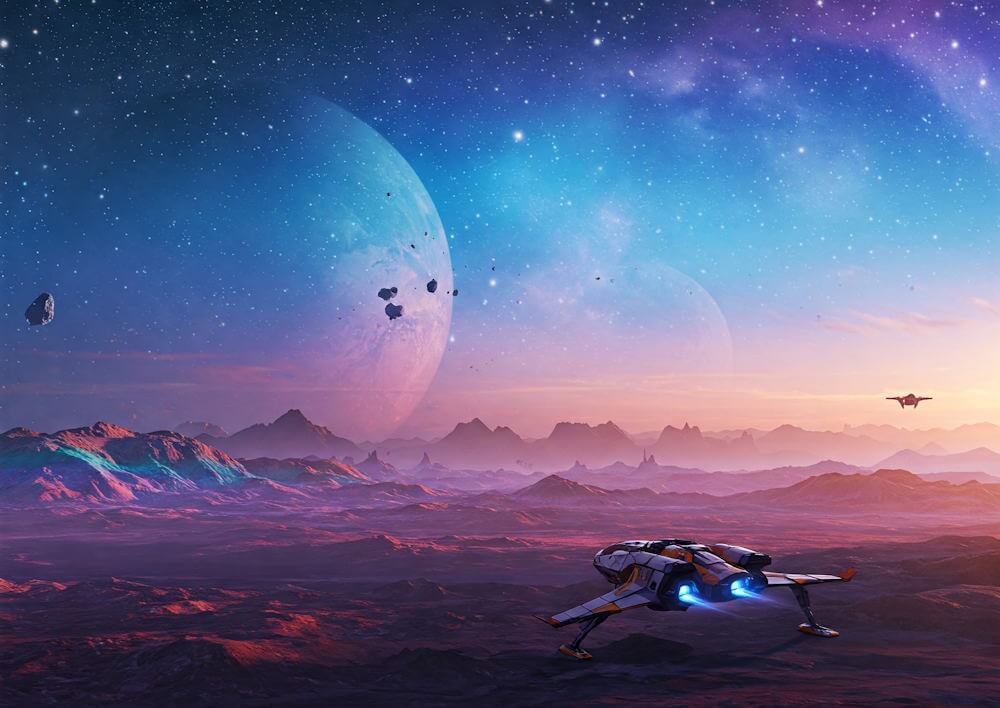Alan Wake 2 is a highly anticipated sequel to the original Alan Wake, a psychological thriller video game developed by Remedy Entertainment and released in 2010. The first installment garnered critical acclaim for its unique narrative-driven approach and atmospheric storytelling, establishing a dedicated fan base and influencing the genre significantly. This sequel has been in development since its announcement in 2018, with hints dropped during various gaming events and showcases, fueling speculation and excitement among the gaming community.
The narrative of Alan Wake 2 picks up after the events of the first game, continuing the story of the troubled author Alan Wake as he navigates a landscape heavily influenced by psychological horror themes. The game promises to delve deeper into the lore established in its predecessor while introducing new gameplay mechanics and a richer, more immersive environment. The development team is committed to pushing the boundaries of storytelling and gameplay, ensuring that they deliver an experience that resonates with both new players and long-time fans.
Alan Wake 2 is significant within the gaming industry for several reasons. It represents a revival of interest in narrative-rich titles that prioritize character development and plot depth over conventional gameplay mechanics. Moreover, it emphasizes the potential for games to explore psychological themes, allowing players to engage with complex emotional narratives. The anticipation surrounding the game’s release has reached a fever pitch, with numerous trailers and teaser content igniting discussions across social media platforms, gaming forums, and conventions.
As the release date approaches, the excitement only continues to grow, and expectations for Alan Wake 2 reflect the hope that it will build upon the solid foundation established by the original. With its compelling narrative and a style that is sure to challenge players, Alan Wake 2 is poised to make a significant impact in the realm of psychological thrillers in gaming.
Storyline and Themes
Alan Wake 2 continues the gripping narrative established in its predecessor, immersing players in a profound psychological thriller that intricately explores the complexities of fear, darkness, and the art of storytelling. Set in the eerie fictional town of Bright Falls, the sequel delves deeper into the mind of the protagonist, Alan Wake, whose tumultuous journey reveals the enigmatic nature of creativity and its consequences. The narrative not only focuses on Wake’s battle against supernatural forces but also encapsulates the turmoil of his psyche, effectively blending horror elements with psychological depth.
The storyline unfolds as Alan, after a prolonged absence, returns to confront the horrors that have besieged both him and the town. This return is marked by the intertwining of reality and the supernatural, leading to the exploration of themes of memory and trauma. The tension escalates as Alan struggles to piece together fragmented memories while contending with malevolent entities that seem to reflect his own internal struggles. Character development plays a pivotal role, as we witness Alan’s evolution from a tormented writer to a resilient figure confronting his own darkness.
One of the primary themes of Alan Wake 2 is the dichotomy between light and dark, representative not only of the physical battles Alan faces but also the metaphorical shadow cast by his fears and regrets. The narrative emphasizes the notion that storytelling itself can be both a source of liberation and a path to unforeseen horrors. Moreover, the intricate relationship between creator and creation is examined, inviting players to consider the effects of an artist’s psyche on their work. Alan Wake 2, through its multifaceted storyline and profound themes, solidifies its place as a compelling psychological thriller that resonates with players on both emotional and intellectual levels.
Gameplay Mechanics
Alan Wake 2 introduces a range of gameplay mechanics that significantly enhance the immersive experience of the psychological thriller genre. Building upon the foundations laid by its predecessor, the sequel presents a finely-tuned combination of combat, exploration, and puzzle-solving aspects that are integral to its narrative-driven approach.
One of the standout features in Alan Wake 2 is the refined combat system that now incorporates strategic elements, making encounters not just about firepower but also about resource management. Players are required to wield light sources more effectively, which can disorient or defeat enemies shrouded in darkness. This mechanic emphasizes the theme of light versus dark, which is central to the narrative, offering players a tangible connection to the looming horror that envelops the protagonist.
Exploration has also seen significant enhancements. The environment is richly detailed, showcasing a dynamic world that encourages players to delve into its lore through collectibles and hidden pathways. The narrative is interwoven with environmental storytelling, where players uncover clues that tie directly into the main plot. This is complemented by a day-night cycle that alters the dynamics of exploration, further deepening the psychological tension.
Puzzle-solving elements have evolved to introduce multi-layered challenges that require creativity and critical thinking. Unlike the straightforward puzzles of the first game, players now face intricate scenarios that often incorporate elements from the environment, utilizing both their wit and the aforestated combat mechanics. The integration of these puzzles within the gameplay fosters a sense of immersion, compelling players to think beyond the obvious as they navigate the complexities of Alan Wake’s mind.
In conclusion, the gameplay mechanics in Alan Wake 2 not only maintain the core essence of the first game but also introduce innovative features that heighten the psychological thriller experience. Through refined combat, extensive exploration, and complex puzzles, players are invited into a hauntingly immersive world that challenges both their skills and their psyche.
Visuals and Sound Design
One of the most striking features of Alan Wake 2 is its exceptional visual aesthetics, which play a crucial role in crafting an immersive atmosphere that keeps players engaged. The graphics are both breathtaking and meticulous, showcasing detailed environments that evoke a sense of eeriness. The developers have utilized advanced rendering techniques to create dynamic lighting and realistic textures, allowing the player to become enveloped within a hauntingly beautiful world. Each scene is meticulously designed, from the dark woods and abandoned cabins to illuminated landmarks that punctuate the surrounding gloom, enhancing the overall psychological horror experience.
The art style further contributes to the game’s unsettling ambiance. With a blend of realism and artistic stylization, the visuals portray not only the physical environment but also the psychological state of Alan Wake himself. This interplay between character and setting is essential for the narrative, as it reflects the protagonist’s turmoil and fragility. Shadows creep across the landscapes, while ethereal visual elements hint at deeper mysteries and instill a lingering sense of dread.
Equally important is the sound design, which masterfully complements the visuals to heighten the psychological tension. The atmospheric soundscapes are crafted with an acute attention to detail, featuring ambient noises that elicit a palpable sense of unease. From the rustling of leaves to the distant echoes of unsettling whispers, each sound is purposeful, creating an immersive audio experience that draws players further into the world of Alan Wake 2. Moreover, the use of a haunting musical score elevates key moments, intensifying the emotional impact and keeping players on the edge of their seats.
In essence, the synergy between visuals and sound design is crucial in Alan Wake 2, establishing an eerie mood and creating a gripping experience that resonates with players long after they have put down the controller. The rich, immersive elements of graphics and audio not only enhance gameplay but also reinforce the psychological themes at the core of the narrative.
Character Analysis
In “Alan Wake 2,” the character dynamics offer a profound exploration of psychological complexities, enriching both the narrative and gameplay. Central to the storyline, Alan Wake himself emerges as a multifaceted protagonist haunted by his past and driven by an insatiable desire to reclaim his lost identity and sanity. His journey reflects a battle against his inner demons as well as external threats, showcasing the often-blurred line between reality and fiction. Alan’s motivations are shaped by guilt and an urgent need for redemption, which propels him on a harrowing quest.
Alongside Alan, new characters are introduced, each with their own unique complexities and interpersonal relationships that dimly illuminate their psyche. A notable addition is Saga Anderson, an FBI agent suffering from her own form of existential crisis. She is relentless in her pursuit of truth, yet the weight of her responsibilities creates a fascinating juxtaposition to Alan’s fractured psyche. Their paths converge, revealing a deep-seated connection that challenges their perceptions of reality and solidifies their roles within the overarching narrative.
The interplay between Alan and Saga serves as a compelling lens through which the player experiences themes of isolation, trauma, and the nature of creative expression. As they navigate a world rife with danger and supernatural elements, their evolving relationship underscores the significance of trust and support in overcoming adversities. Moreover, recurring antagonists introduce additional layers of psychological tension, pushing both characters to confront their fears and insecurities in a relentless battle for survival.
Ultimately, the characters in “Alan Wake 2” are intricately designed to enhance the narrative depth, as their motivations and relationships provide insight into the human experience amidst horror and madness. Each character significantly contributes to the overall atmosphere, ensuring that players remain deeply engaged in this psychological thriller.
Comparisons to the Original Game
Alan Wake 2 marks a significant evolution from its predecessor, refining various aspects that contribute to the psychological thriller genre. The original Alan Wake was lauded for its captivating storytelling, atmospheric gameplay, and gripping narrative, but the sequel takes these elements to new heights. One of the most notable enhancements is the storytelling approach, where Alan Wake 2 employs a more intricate and layered narrative structure. Players are introduced to fresh characters and deeper character arcs that elevate the emotional stakes of the story. The plot intricately weaves themes of trauma, identity, and the blurred lines between reality and fiction, which are explored more comprehensively than before.
From a gameplay perspective, Alan Wake 2 introduces improved mechanics that enhance player engagement. The original game featured a combat system that, although innovative, could be monotonous at times. The sequel addresses this by integrating more varied gameplay elements, including new weapons, crafting systems, and strategic environmental interactions. This evolution not only diversifies gameplay but also amplifies the psychological tension integral to the core experience. The environments are more expansive and interactive, encouraging players to explore and interact with the world rather than simply progressing through linear pathways.
Visually, Alan Wake 2 exemplifies a remarkable upgrade over its predecessor. Utilizing advanced graphical technology, the sequel showcases stunning environments and meticulously designed character models. The lighting effects and atmospheric conditions enhance the immersive experience, effectively drawing players into its eerie world. Cinematic sequences are more dynamic, offering an enhanced layering of visuals and storytelling that captivates audiences. Overall, Alan Wake 2 stands as a compelling sequel, honoring its roots while making significant strides in storytelling, gameplay, and visual presentation. This evolution not only fulfills the expectations set by the original Alan Wake but surpasses them, solidifying its place in contemporary gaming.
Critical Reception and Expectations
Upon its release, Alan Wake 2 garnered a variety of reviews from both critics and players, marking it as a notable entry in the psychological thriller genre. Generally, the response has been positive, with many praising its compelling narrative, atmospheric design, and emotional depth. The game continues to build on the intricate storytelling established in the first Alan Wake, effectively weaving personal trauma and external conflict into a cohesive and immersive experience. Critics have noted that the new gameplay mechanics, which emphasize exploration and puzzle-solving, add layers of complexity that enhance player engagement.
However, not all feedback has been uniformly favorable. Some players expressed concerns regarding pacing issues and the occasional lack of clarity in certain plot points. These criticisms highlight the delicate balance that game developers must maintain between delivering a richly detailed story and ensuring that players remain engaged throughout. Furthermore, performance issues have been reported on various platforms, potentially affecting accessibility for a broader audience. Developers must address these feedback points to ensure that the gameplay remains smooth and the experience rewarding.
The combination of strong narrative elements and engaging gameplay mechanics suggests promising prospects for Alan Wake 2’s long-term success. Addressing player critiques will be essential not only for potential updates and patches but also for setting the groundwork for any sequels or expansions. By actively engaging with community feedback and fostering an ongoing dialogue with the player base, developers can enhance the game’s longevity and relevance in the marketplace, ensuring the series continues to evolve in ways aligned with player expectations.
Community and Fan Reactions
The anticipation surrounding the release of Alan Wake 2 has sparked significant engagement within the gaming community. Fans of the original game, released in 2010, have taken to social media platforms and dedicated forums to share their thoughts, theories, and expectations for the sequel. This level of community involvement serves as a testament to the strong legacy that the Alan Wake series has established over the years.
Prior to the game’s official release, a wide array of speculative discussions emerged across various online platforms. These discussions often revolved around potential plot twists, new gameplay mechanics, and the overall narrative direction of Alan Wake 2. Some fans even delved into the potential connections between the original game and its sequel, examining character arcs and unresolved threads from the first installment. This analytical approach not only highlights the community’s deep investment in the storyline but also showcases their desire to engage with the material on a deeper level.
Post-release, the buzz surrounding Alan Wake 2 intensified as players began sharing their experiences. Online communities have become bustling hubs of discussion, with players dissecting story elements, character development, and gameplay mechanics. Fan theories have flourished as gamers compare their individual interpretations of the plot and explore the psychological themes that the game intricately weaves into its narrative. A sense of camaraderie has developed within these discussions, as players unite in their shared experiences and revelations of the game.
The community’s response has not merely been confined to opinions and theories; there has also been a surge in creative content inspired by Alan Wake 2. From fan art to video essays, the game’s influence is palpable across various creative mediums. As a psychological thriller, the game invites different interpretations, which only adds to the excitement and diversity of community engagement. The ongoing dialogue among fans continues to enrich the experience of Alan Wake 2, making it a noteworthy cultural phenomenon in the gaming landscape.
Conclusion: Worth the Wait?
As we draw near to the release of Alan Wake 2, it becomes imperative to evaluate whether this much-anticipated sequel lives up to the lofty expectations set by its predecessor. The original Alan Wake carved a niche for itself as a seminal psychological thriller, blending captivating storytelling with a rich, immersive environment. As a sequel, Alan Wake 2 carries the dual burden of meeting fan expectations while also expanding on the narrative and gameplay mechanics that made the first game a classic.
Early previews and gameplay footage suggest that the developers have taken significant strides in enhancing the atmosphere and tone that fans have come to love. The promise of deeper psychological elements and an intricate story may signify that Alan Wake 2 will not only appeal to die-hard fans of the series but also attract newcomers to the genre. The commitment to exploring themes of fear, isolation, and the human psyche indicates a thoughtful approach to storytelling—one that could set new benchmarks for psychological thrillers in gaming.
The success of Alan Wake 2 may very well serve as a litmus test for the future of psychological thrillers within the gaming community. If the game delivers on its promising elements, it could pave the way for more complex narratives and sophisticated gameplay in subsequent titles. This, in turn, may inspire future developers to experiment boldly with the psychological thriller genre and its possible adaptations into engaging game design.
Ultimately, the reception of Alan Wake 2 will reveal whether it is a worthy successor to its predecessor. This sequel holds the potential not only to add to the legacy of the franchise but also to shape the future trajectory of psychological thrillers in video games, making it a critical focal point for enthusiasts eager for innovative storytelling in this captivating genre.



